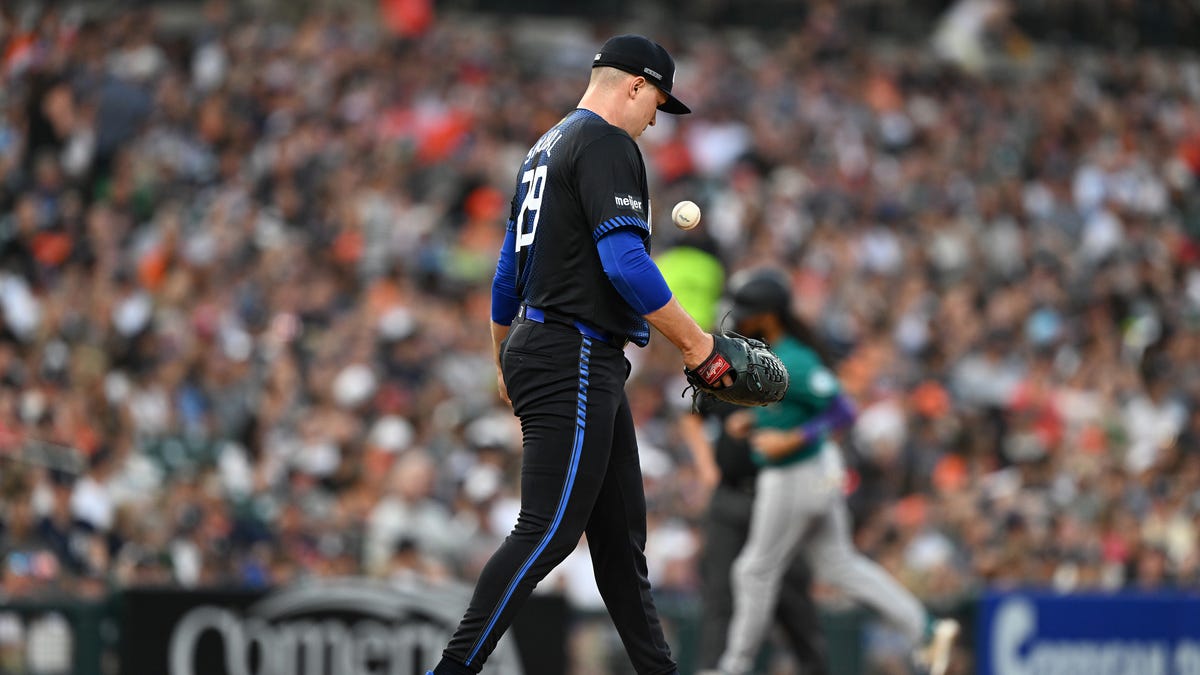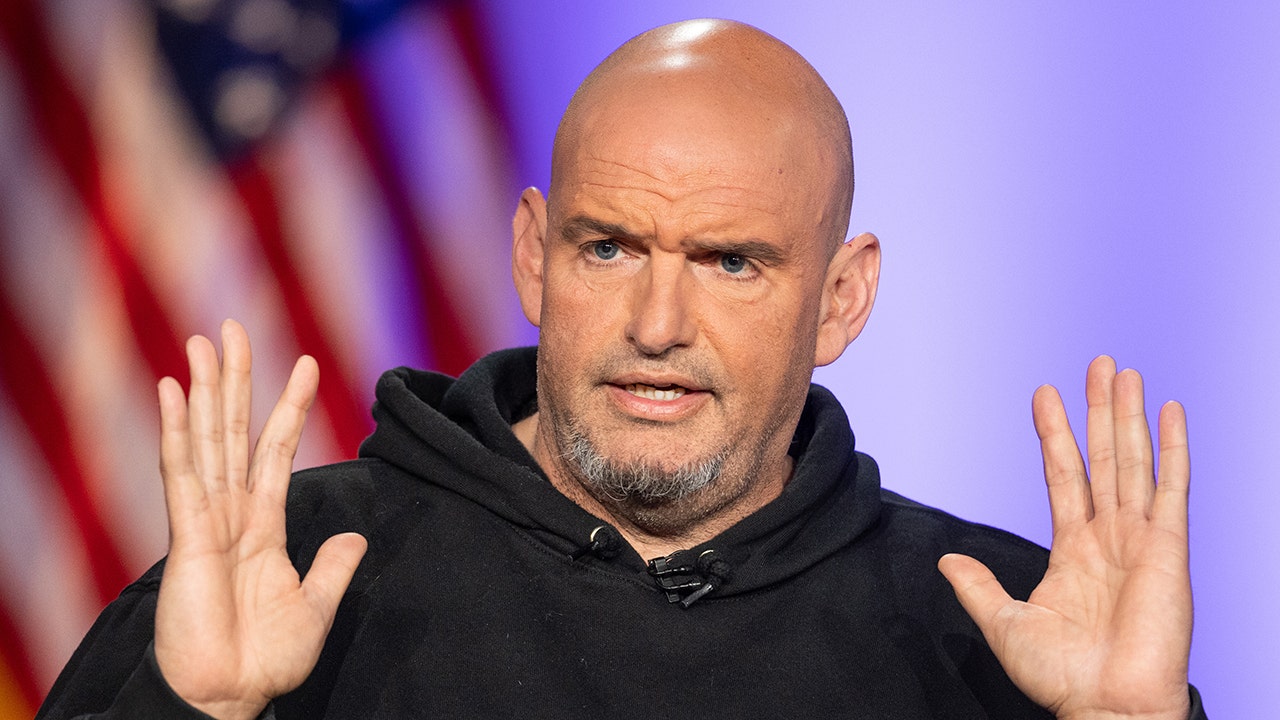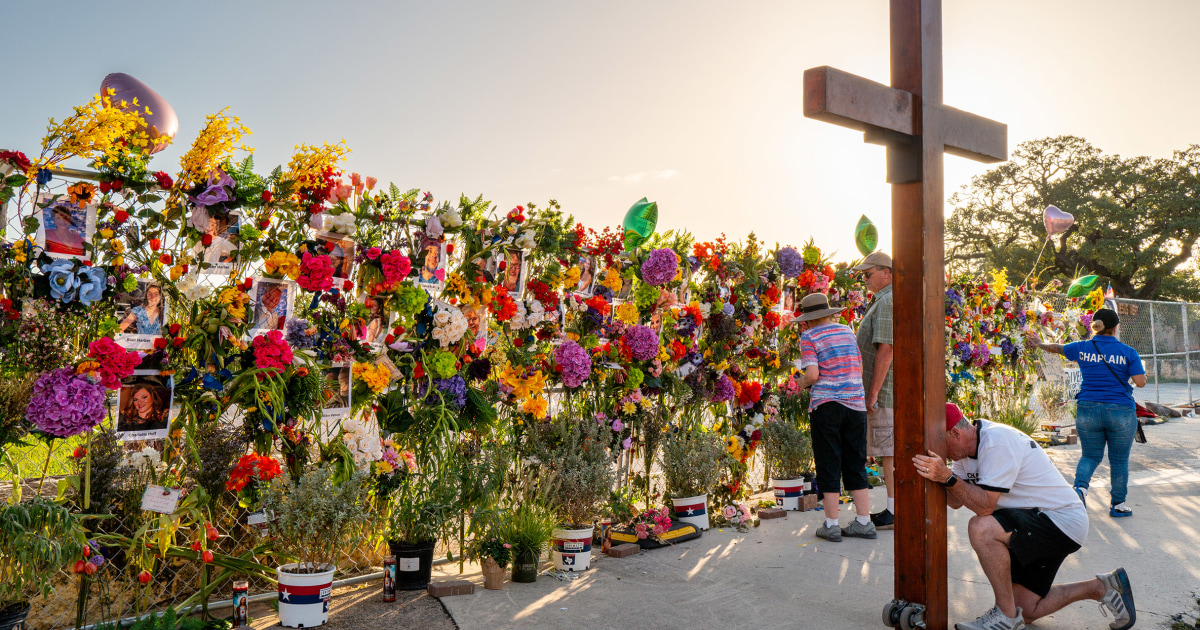Science
Botox is out. Plasma injections are in. But is L.A.'s 'natural' anti-aging movement any better?
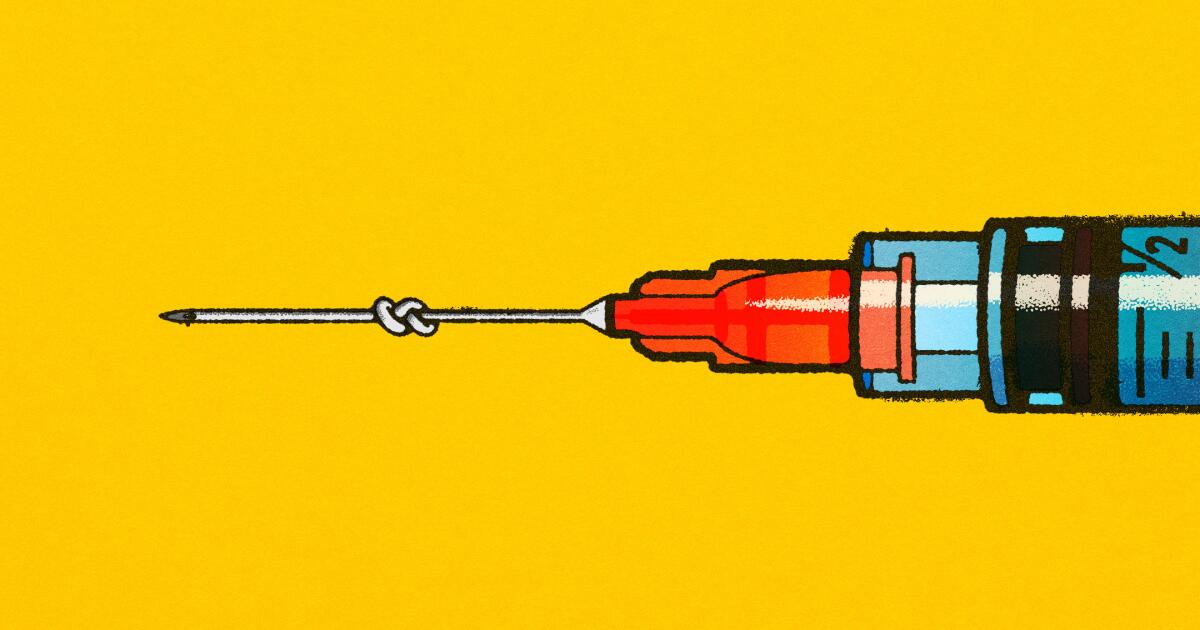
When Ali Weiss, 30, shares a selfie on Instagram, she often adds a disclaimer: This is a face that hasn’t had any work done.
“The most punk thing you can do in 2024 is not f— with your face,” the New York City-based on-air host and podcaster writes via email. Surrounded by peers who got fillers early and often, she believes her choice puts her in “the minority,” especially for those working in front of the camera. “The fact that people seem to be more shocked by a-30-year old who hasn’t gotten work done than a 30-year-old whose entire face is frozen is bonkers,” she says.
Weiss writes of her filler-less face with pride, but she still cares about her youthful appearance. She has several less-invasive treatments in her arsenal, including a red-light therapy gadget, laser facials and facial massages. In a few years, she hopes to try more invasive laser treatments that cost thousands. Anything before considering injectables.
For the last few decades, the consumer base for neuro-modulators like Botox and dermal fillers like Juvuderm has grown exponentially. In 2010, more than 5.3 million people got Botox and more than 1.7 million received filler in the U.S. In 2022, 8.7 million received Botox and more than 6.2 million received filler, according to the American Society of Plastic Surgeons. Especially in recent years, these procedures have gone from an indulgence for the wealthy and famous to casual and frequent appointments that cost a few hundred dollars.
“They are incredibly effective, relatively low cost and have become part of an accepted mainstream lexicon for self care,” said Dr. Steven Williams, president of the plastic surgeons’ group.
But now, a number of beauty-conscious consumers are saying “no” to injectables and directing their money toward expensive natural treatments instead.
Marta Freedman, 33, is one of them.
“I grew up in the era of excess injections and the Kardashian era, so for me, it makes sense that the pendulum would swing the other way as people investigate alternatives,” the L.A.-based entrepreneur said.
Weiss and Freedman are among a chorus of anti-injectable sentiment on social media and in beauty publications that has intensified in recent years.
“The art is in making the work disappear and look like nothing has happened.”
— Dr. Ava Shamban, founder of Skinfive Medical Spa in Pacific Palisades
TikTok and Instagram feature thousands of videos of (mostly) women chronicling the process of dissolving their filler. The sometimes painful process can take multiple sessions and is done by injecting an enzyme called hyalase that can cause facial features like lips to bruise and balloon before settling back into their original shape.
Many Los Angeles-based practitioners are noting filler fatigue among their clientele. They’ve seen more patients who are asking not only for their fillers to be dissolved but also seeking alternative procedures to maintain an enhanced, albeit more technically natural, look.
“There is a pendulum swing back to the more natural, best version of yourself, similar to the ‘no makeup makeup look,’” said Dr. Ava Shamban, founder of Skinfive Medical Spa in Pacific Palisades. “The art is in making the work disappear and look like nothing has happened.”
So what are the beauty-obsessed, but Botox-averse doing instead? Some will pay top dollar for all-natural ancient practices, while others opt for high-tech, sometimes painful treatments — just so long as they can say they’re toxin-free.
Julie Civiello Polier has amassed more than 120,000 followers on Instagram by espousing noninvasive anti-aging facial massage techniques. Before the pandemic, the Los Angeles-based aesthetician and Chinese medicine practitioner offered in-person facials to her celebrity clientele, including Goldie Hawn, Miranda Kerr and Christy Turlington, but has since moved her practice online, teaching clients massage techniques for facial lifting and sculpting.
Her Instagram videos — with titles like “Support for ovaries and eyebrow lift” and “No Botox needed forehead sculpting” — have built her a dedicated audience . The services she provides range from live-streamed classes on DIY face-lifts (that cost $100 per ticket) to one-on-one coaching packages, priced at more than $2,000.
“I don’t feel aligned with filler or Botox, I prefer myself with a more natural look.”
— Marta Freedman, L.A.-based entrepreneur
Angela Cravens, a 45-year-old copywriter based in San Diego who prefers chemical-free beauty products and Eastern-inspired natural practices, is one of her followers. Since finding Polier’s free tutorials on Instagram, she’s built a gua sha and facial routine that works for her. She says people often mistake her for being younger than she is — something she posits may be because she avoids injectables, “not the other way around.”
Polier says her clients come for the aesthetic benefits but find unexpected emotional release from her techniques. Inspired by traditional Chinese medicine, she believes inner traumas can affect parts of the face.
“This one client kept getting surgeries on one part of the face and it kept kind of drooping back down or kept kind of being really inconsistent with the other side, until we started looking at her relationship with her father,” Polier said. “That left side of the face is where our relationship to [our] father is stored.”
In West Hollywood, a three-year-old cosmetic acupuncture practice called the Reset caters to people in their late 20s to 40s who don’t want to try injectables. Owner Toni Weinrit, a board certified and licensed doctor of acupuncture and Chinese medicine, says that although some of her older clients still use injectables, the younger generation is thinking twice.
Freedman, the L.A.-based entrepreneur, found Weinrit on Instagram and did weekly treatments at the Reset for about 10 weeks last year. She plans to resume them there soon. (In the meantime, she’s supplementing with at-home electrocurrent devices, Frownies wrinkle reducing patches and professional facial massages).
“I don’t feel aligned with filler or Botox. I prefer myself with a more natural look,” she said.
Weinrit charges $250 a visit for the service, advising a regimen of 10 sessions across five to 10 weeks (after which she recommends once-a-month maintenance, combined with occasional $500 microneedling, which she said aids in improving skin texture).
The American Institute of Alternative Medicine says cosmetic acupuncture “operates on the belief that the face reflects the body’s internal balance and health.” While the practice is rooted in more than 2,000 years of traditional Chinese medicine, there have been limited scientific studies investigating its benefits on facial skin elasticity.
Though Weinrit’s services are significantly more expensive and time-consuming than your average Botox or filler treatment, her schedule is booked. She theorizes that that’s because the results are gradual.
“If you get Botox, 24 to 48 hours later, you have a different face,” said Weinrit. “This is not that.”
“If you get Botox, 24 to 48 hours later, you have a different face. This is not that.”
— Toni Weinrit, owner of West Hollywood acupuncture studio The Reset
Some clinics have begun counseling patients about the changes they want to make, going so far as to refuse requests that won’t look natural.
Cosmetic nurse Vanessa Lee nearly left the industry after being asked to give lip injections to a teenage girl with her mother’s approval. In 2018, she opened The Things We Do, a medspa in downtown’s Arts District (now with locations in Chino Hills and Venice too) that focuses on a moderate approach. Lee, who has more than a decade of experience, says the medspa receives so many requests to dissolve filler done by other practitioners that she has had to begin charging for the once-complimentary service.
The Things We Do has a naturopathic doctor, a licensed healthcare provider on staff who is trained to address skincare through gut health. Lee says she has turned away patients who request excessive work and has referred them to a therapist.
“If somebody comes in and they’re saying things like ‘This guy just broke up with me’ or ‘I’ve been through the hardest year,’ maybe they’re not at a place to be making a big decision about full facial balancing while they’re in this emotional state that needs a bit of support,” she said. “Let’s start somewhere else first.”
Even so, Lee is running a business. For patients who are seeking a youthful refresh, she and her nurses first suggest bio-stimulating treatments like platelet-rich fibrin matrix.
The treatment, which clinical studies have shown can reduce wrinkles and hyperpigmentation, involves drawing a patient’s blood, extracting the plasma from it and either injecting it in the face for those with volume loss in a specific place or using it with microneedling devices for patients with thin or dull skin.
One session starts at $1,100 for results that can last up to two years when done twice. Yes, needles are used, but no foreign bodies are injected into the face, a technicality that is meaningful to clients who want to avoid chemicals.
The procedure is proof that, though the pendulum may be swinging toward a more natural approach and look, one thing will never go out of style: the willingness to pay — and suffer — for the promise of beauty.

Science
How a Supreme Court win for public health bolstered RFK Jr. and threatens no-cost vaccines

WASHINGTON — Public health advocates won a big case in the Supreme Court on the last day of this year’s term, but the victory came with an asterisk.
The decision ended one threat to the no-cost preventive services — from cancer and diabetes screenings to statin drugs and vaccines — used by more than 150 million Americans who have health insurance.
But it did so by empowering the nation’s foremost vaccine skeptic: Health and Human Services Secretary Robert F. Kennedy Jr.
Losing would have been “a terrible result,” said Washington attorney Andrew Pincus. Insurers would have been free to quit paying for the drugs, screenings and other services that were proven effective in saving lives and money.
But winning means that “the secretary has the power to set aside” the recommendations of medical experts and remove approved drugs, he said. “His actions will be subject to review in court,” he added.
The new legal fight has already begun.
Last month, Kennedy cited a “crisis of public trust” when he removed all 17 members of a separate vaccine advisory committee. His replacements included some vaccine skeptics.
The vaccines that are recommended by this committee are included as preventive services that insurers must provide.
On Monday, the American Academy of Pediatrics and other medical groups sued Kennedy for having removed the COVID-19 vaccine as a recommended immunization for pregnant women and healthy children. The suit called this an “arbitrary” and “baseless” decision that violates the Administrative Procedure Act.
“We’re taking legal action because we believe children deserve better,” said Dr. Susan J. Kressly, the academy’s president. “This wasn’t just sidelining science. It’s an attack on the very foundation of how we protect families and children’s health.”
On Wednesday, Kennedy postponed a scheduled meeting of the U.S. Preventive Services Task Force that was at the center of the court case.
“Obviously, many screenings that relate to chronic diseases could face changes,” said Richard Hughes IV, a Washington lawyer and law professor. “A major area of concern is coverage of PrEP for HIV,” a preventive drug that was challenged in the Texas lawsuit that came to the Supreme Court.
By one measure, the Supreme Court’s 6-3 decision was a rare win for liberals. The justices overturned a ruling by Texas judges that would have struck down the popular benefit that came with Obamacare. The 2012 law required insurers to provide at no cost the preventive services that were approved as highly effective.
But conservative critics had spotted what they saw was a flaw in the Affordable Care Act. They noted the task force of unpaid medical experts who recommend the best and most cost-effective preventive care was described in the law as “independent.”
That word was enough to drive the five-year legal battle.
Steven Hotze, a Texas employer, had sued in 2020 and said he objected on religious grounds to providing HIV prevention drugs, even if none of his employees were using those drugs.
The suit went before U.S. District Judge Reed O’Connor in Fort Worth, who in 2018 had struck down Obamacare as unconstitutional. In 2022, he ruled for the Texas employer and struck down the required preventive services on the grounds that members of the U.S. Preventive Services Task Force made legally binding decisions even though they had not been appointed by the president and confirmed by the Senate.
The 5th Circuit Court put his decision on hold but upheld his ruling that the work of the preventive services task force was unconstitutional because its members were “free from any supervision” by the president.
Last year, the Biden administration asked the Supreme Court to hear the case of Xavier Becerra vs. Braidwood Management. The appeal said the Texas ruling “jeopardizes health protections that have been in place for 14 years and millions of Americans currently enjoy.”
The court agreed to hear the case, and by the time of the oral argument in April, the Trump administration had a new secretary of HHS. The case was now Robert F. Kennedy Jr. vs. Braidwood Management.
The court’s six conservatives believe the Constitution gives the president full executive power to control the government and to put his officials in charge. But they split on what that meant in this case.
The Constitution says the president can appoint ambassadors, judges and “all other Officers of the United States” with Senate approval. In addition, “Congress may by law vest the appointment of such inferior officers” in the hands of the president or “the heads of departments.”
Option two made more sense, said Justice Brett M. Kavanaugh. He spoke for the court, including Chief Justice John G. Roberts and Justice Amy Coney Barrett, and the court’s three liberal justices.
“The Executive Branch under both President Trump and President Biden has argued that the Preventive Services Task Force members are inferior officers and therefore may be appointed by the Secretary of HHS. We agree,” he wrote.
This “preserves the chain of political accountability. … The Task Force members are removable at will by the Secretary of HHS, and their recommendations are reviewable by the Secretary before they take effect.”
The ruling was a clear win for Kennedy and the Trump administration. It made clear the medical experts are not “independent” and can be readily replaced by RFK Jr.
It did not win over the three justices on the right. Justice Clarence Thomas wrote a 37-page dissent.
“Under our Constitution, appointment by the President with Senate confirmation is the rule. Appointment by a department head is an exception that Congress must consciously choose to adopt,” he said, joined by Justices Samuel A. Alito and Neil M. Gorsuch.
Science
Life expectancy in California still hasn't rebounded since the pandemic

During the height of the COVID-19 pandemic, the virus caused life expectancy in California to drop significantly.
It’s now been over two years since officials declared the pandemic-related public health emergency to be over. And yet, life expectancy for Californians has not fully recovered.
Today, however, the virus has been replaced by drug overdoses and cardiovascular disease as the main causes driving down average lifespans.
A new study published in the medical journal JAMA by researchers from UCLA, Northwestern, Princeton and Virginia Commonwealth University finds that the average life expectancy for Californians in 2024 was nearly a year less than in 2019. The shortfall of 0.86 year signals that only about two-thirds of the state’s pandemic-era losses of 2.92 years have been reversed.
Using mortality data from the California Comprehensive Death Files and population estimates from the American Community Survey, the researchers calculated annual life expectancy from 2019 to 2024, breaking the figures down by race, ethnicity, income and cause of death.
Although the COVID-19 virus was the primary factor in life expectancy declines during the pandemic’s peak, accounting for 61.6% of the life expectancy gap, its impact has significantly lessened. In 2024, COVID-19 accounted for only 12.8% of the life expectancy gap compared with 2019, while drug overdoses and cardiovascular disease contributed more — 19.8% and 16.3%, respectively.
For Black and Hispanic Californians, recovery has been even slower. Life expectancy for Black residents in 2024 remained 1.48 years below 2019 levels, while for Hispanic residents it was 1.44 years lower. In contrast, the gap for white residents was 0.63 year, and for Asian residents, who have the highest life expectancy in the state at 85.51 years, it was 1.06 years. Overall, the life expectancy for Black Californians in 2024 was under 73.5 years, more than a dozen years lower than that of Asian Californians.
Janet Currie, a co-author of the study and professor at Princeton University, noted that these disparities are especially striking. “You saw the very big hit that Hispanic people and Black people took during the pandemic,” she said, “but you also see that Black people in particular are still not caught up.” She added that although Hispanic populations saw a faster rebound, they too remain behind.
Income-based disparities in life expectancy persist in stark form. Californians living in the lowest-income census tracts (the bottom quartile) experienced a 0.99-year gap in 2024 compared with 2019, while those in the highest-income quartile had a slightly smaller 0.85-year gap. However, the overall life expectancy difference between these groups, 5.77 years, was nearly identical to the prepandemic gap of 5.63 years, suggesting that income-based health disparities persist even as pandemic impacts recede.
The study highlights drug overdoses as a primary post-pandemic-emergency driver of reduced life expectancy. Black Californians and residents of low-income areas were especially affected. In 2023, drug overdoses contributed nearly a full year (0.99 year) to the life expectancy deficit for Black Californians and over half a year (0.52) for residents of low-income areas.
That said, there are signs that state and national efforts to address the overdose crisis may be yielding early results. The number for Black Californians declined to 0.55 year in 2024 while it declined to 0.26 year for residents in low-income areas; in the same time frame, the statewide number dropped from 0.4 year to 0.17 year.
Currie attributed the initial surge in overdose deaths in part to the pandemic itself; there were disruptions in access to treatment, and many Californians suffered greater isolation. While she welcomed the recent progress, she cautioned that the share of deaths attributable to overdoses remains high and emphasized that this was “one of the real bad consequences of the pandemic.”
Meanwhile, cardiovascular disease is now the leading contributor to life expectancy loss among high-income Californians. In 2024, it accounted for 0.22 year of the gap for the wealthiest quartile, more than COVID-19 did at 0.10 year. The authors note this is consistent with statewide rising rates of obesity, which may be playing a role.
Dr. Tyler Evans, chief medical officer and chief executive of Wellness Equity Alliance as well as the author of the book “Pandemics, Poverty, and Politics: Decoding the Social and Political Drivers of Pandemics from Plague to COVID-19,” emphasized how the pandemic exacerbated long-standing health inequities. “These chronic health inequities were further amplified as the result of the pandemic,” he said. While investments in social determinants of health initially helped mitigate some of the worst outcomes, he added, “the funding dried up,” making recovery harder for communities already at greater risk of poor outcomes.
Evans also pointed to a broader pattern of overlapping health crises that he described as a “syndemic,” a convergence of epidemics such as addiction, chronic disease and poor access to care that interact to worsen outcomes for historically marginalized populations. “Until we invest in that sort of foundation long term, the numbers will continue to decline,” he said. “California should be a leader in health improvement outcomes in the country, not a state that continues to have our survival decline.”
Although the findings are limited to California and based on preliminary 2024 data, the study provides an early glimpse into post-pandemic mortality trends ahead of the Centers for Disease Control and Prevention’s national life expectancy dataset, expected to be published later this year. California, home to one-eighth of the U.S. population, provides valuable insight into how racial, ethnic and socioeconomic disparities continue to shape public health.
Ultimately, the study highlights how although the most visible impacts of COVID-19 may have faded, their ripple effects, compounded by ongoing structural inequities, continue to shape life and death in California. The pandemic may have accelerated long-standing public health challenges, and the recovery, the study makes clear, has been uneven and incomplete.
Currie warned that further cuts to Medicaid and public hospitals could make these gaps even worse. “We know what to do. We just don’t do it,” she said.
Science
Commentary: A candid take on mortality and the power of friendship
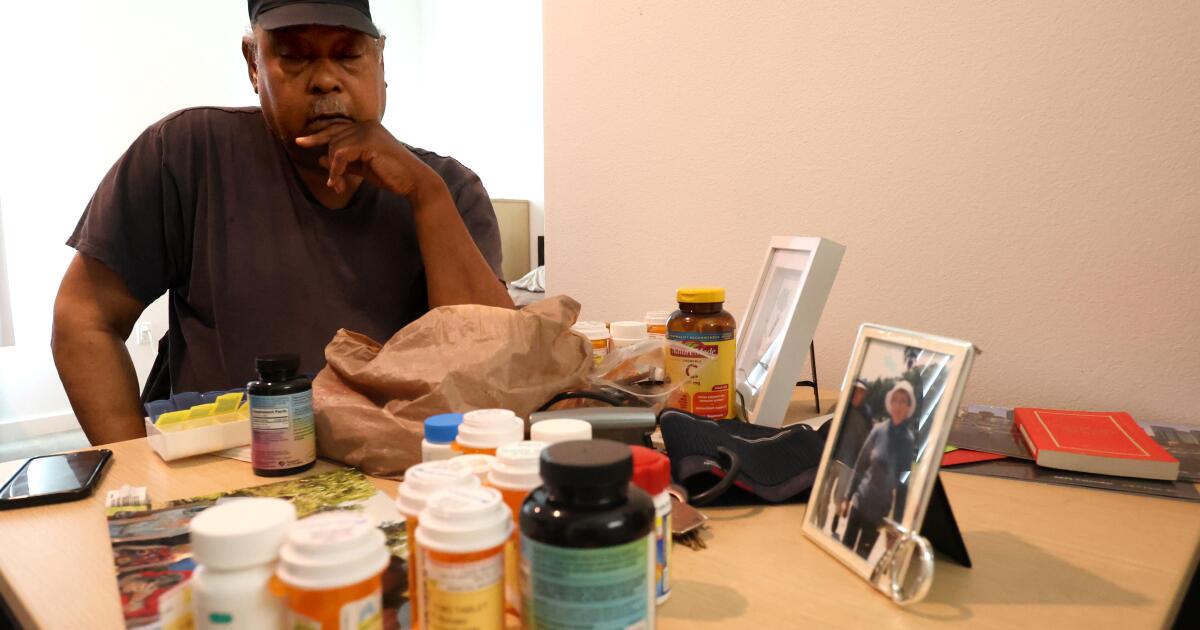
They gather several times a week in the parking lot of a Vons supermarket in Mar Vista, and no subject is off-limits. Not even the grim medical prognosis for 70-year-old David Mays, one of the founding members of the coffee klatch.
“It’s one of our major topics of conversation,” said Paul Morgan, 45, a klatch regular.
Mays is a cancer survivor with a full package of maladies, including diabetes, a faltering heart and failing kidneys. But since I met him almost two years ago, he has told me repeatedly that he doesn’t want dialysis treatment, even though it might extend his life.
“I get it, because it’s a lot of hours out of your day,” said Morgan, a schoolteacher who lives nearby. “People think you go in for dialysis for 15 minutes before you go straight to work. But really, it’s a part-time job.”
Steve Lopez
Steve Lopez is a California native who has been a Los Angeles Times columnist since 2001. He has won more than a dozen national journalism awards and is a four-time Pulitzer finalist.
His treatment would require that he visit a dialysis center three times a week, for four hours each time, Mays said.
“For the rest of my life.”
“I don’t think I could do it,” said klatcher Kit Bradley, 70, who lives in a van near the supermarket with his dog, Lea.
I met Mays in October 2023, when he was living in his Chevy Malibu in a downtown garage that was part of the Safe Parking L.A. program. Mays later moved into an apartment in East Hollywood and still lives there, but his health has continued to deteriorate.
“He is Stage 5,” said Dr. Thet Thet Aung, Mays’ nephrologist at Kaiser Permanente West Los Angeles.

David Mays, center, enjoys a morning get-together with Paul Morgan, left, and Kit Bradley in a Vons parking lot in West Los Angeles on June 25, 2025.
(Genaro Molina / Los Angeles Times)
For such patients, Aung said, death can be imminent. She told me she’s had many conversations with Mays about his treatment options, including dialysis in a clinic or self-administered at home. But not everyone does well on dialysis, she added, and when a patient makes an informed choice, “we respect their wishes.”
Mays has a refreshingly healthy attitude about mortality. Multibillion-dollar industries cater to those who want to look younger and live longer, and about 25% of Medicare’s massive outlay is spent on patients in the last year of life, many of whom choose life-extending medical procedures.
Mays, in the time I’ve known him, has been realistic rather than fatalistic. He has told me he doesn’t think bravery, faith or spirituality has anything to do with his desire to let nature take its course.
“It transcends those things,” he said.
He’s at peace with his fate, he explained, because he’s got friends, love and support.
On a recent day at his apartment, I watched Mays load medication from more than 20 vials into a weekly pill organizer.
“I could almost do this in my sleep,” he said as he arranged meds that resembled miniature jelly beans. This one for his kidneys, that one for his heart, his blood pressure, and on and on.

Bottles of medication and photos of close friends rest on David Mays’ table at his apartment in East Hollywood.
(Genaro Molina / Los Angeles Times)
There were 18 pills in each compartment. And none of that will cure any of what ails him, he said.
“You just have to keep doing it, and doing it, just to stay at a sustained level,” he said. “It’s not like … I feel great because I took this stuff.”
Two women in Mays’ life are heartbroken about his condition but respectful of his refusal to try dialysis.
“I don’t want him to suffer for the sake of placating other people,” said Mays’ daughter Jennifer Nutt, 47, of Merced.
Her parents divorced when she and her brother were young, and Nutt had no relationship with Mays until recently. She’s had her own trials, Nutt said, including homelessness.
Father and daughter began connecting in the fall of 2024.
“We spend hours every day talking. It’s like a nonstop festival of catching up,” and they’ve discovered they have the same cheeky sense of humor and pragmatism, and similar traits and interests.
“We like big words and thick books,” Nutt said.
The other woman is Helena Bake, of Perth, Australia, a registered nurse Mays affectionately refers to as “Precious.” They met in 1985, when Mays was visiting London, and Bake, 18 at the time, was working in a restaurant he visited with friends. After Bake moved to Australia, Mays visited her many times and became close to her entire family.
“He was lovely,” said Bake, who is not surprised by Mays’ attitude about his deteriorating health. “He’s always very positive and so pragmatic. He has this wonderful view of the world and the people in his life. It’s such a gift that he has.”
Mays, who gets by on Social Security payments, has set up a GoFundMe page to help pay for his cremation and send his ashes to Bake, to be scattered in his favorite places in Australia.
Lately, medical appointments with his several doctors, and the occasional ER visit, have gotten in the way of one of Mays’ favorite activities — the gatherings in the Vons parking lot.

David Mays is “always very positive and so pragmatic. He has this wonderful view of the world and the people in his life. It’s such a gift that he has,” a longtime friend says.
(Genaro Molina / Los Angeles Times)
Mays worked for many years in the Mar Vista area as a live-in elder care provider, and he’d bump into Bradley at a park, or Morgan in the strip mall that includes the grocery store. Several years ago, they made a habit of grabbing coffee around 7 a.m. and hanging out near Mays’ car. Bradley’s dog often hops into the vehicle, a Vons employee named Elvis comes out for a smoke break, and others come and go.
“I had a cousin who had diabetes, and he called my mom one day and said, ‘I’m not doing it anymore,’ ” Morgan was saying the other day. His mother wasn’t supportive at first, he told the klatch, but she listened to her nephew’s explanation and came around. “Who could judge someone for the choices they make in that situation?”
“There’s a waiting list for kidneys of two to eight years,” Mays said. “Let’s say [in] four or five years, there was a kidney available. Your body can reject it … and then you’re back to the drawing board…. I told Precious about this like a year and a half ago … and she said, ‘I have to hang up now because I have to process this.’ And the next time I talked with her, she said, ‘I get it.’ ”
Mays said he doesn’t want to be “a prisoner to a process, like a machine or something.”
“And you have to do this indefinitely. It’s not like you’re on it for two or three years…,” he said. “It is. The. Rest. Of. Your. Life.”
“I’ve seen people that were on dialysis,” said Bradley, a former musician. “I think I’d rather be just, if I gotta go, I gotta go.”
Morgan said his father, who died last year, had kidney problems in the end and resisted extreme measures to extend his life.
“It’s not like he was at all suicidal, just like David’s not,” Morgan said. “The thing about David is, he’s always been so resolute about it. We’ve never had a discussion where I felt like we could waver him, or like he was on the fence.”
When he first resisted dialysis, Mays said, doctors set him up in a room with a video that explained the process.
“I watched the whole thing, and that was the clincher,” Mays said. “By the time I got through looking at that, I’m just going, ‘Oh HELL no.’”
It’s not that he wants to die, Mays said. It’s that he wants to live on his terms.
“The irony of the whole thing is, it’s all the people that I have around me — they’re the reason I’m willing to go like this. What I get from them in the way of being … uplifted and loved, well, when you have all that, you can deal with anything.”
He has his klatch buddies, he has Precious, he has his daughter in his life again.
“With people around that give a damn about you, care about you, you can deal … with death, you can deal with dying…. And I told my doctors I would rather live a shorter period of time, but with what I feel to be some decent quality of life, than live a longer period of time and be miserable. And I would be miserable on dialysis,” Mays said.
“Plus, I’m 70. It ain’t like I’m 30 and there’s so much life to live. I am the age that I am, and I would like to go further, sure, but it has to close out soon. And I’m fine with that, because I have lived.”
steve.lopez@latimes.com
-

 Business1 week ago
Business1 week agoSee How Trump’s Big Bill Could Affect Your Taxes, Health Care and Other Finances
-

 Culture1 week ago
Culture1 week ago16 Mayors on What It’s Like to Run a U.S. City Now Under Trump
-

 Politics7 days ago
Politics7 days agoVideo: Trump Signs the ‘One Big Beautiful Bill’ Into Law
-

 News1 week ago
News1 week agoVideo: Who Loses in the Republican Policy Bill?
-

 Science1 week ago
Science1 week agoFederal contractors improperly dumped wildfire-related asbestos waste at L.A. area landfills
-

 Technology1 week ago
Technology1 week agoMeet Soham Parekh, the engineer burning through tech by working at three to four startups simultaneously
-

 Politics1 week ago
Politics1 week agoCongressman's last day in office revealed after vote on Trump's 'Big, Beautiful Bill'
-

 World7 days ago
World7 days agoRussia-Ukraine war: List of key events, day 1,227


